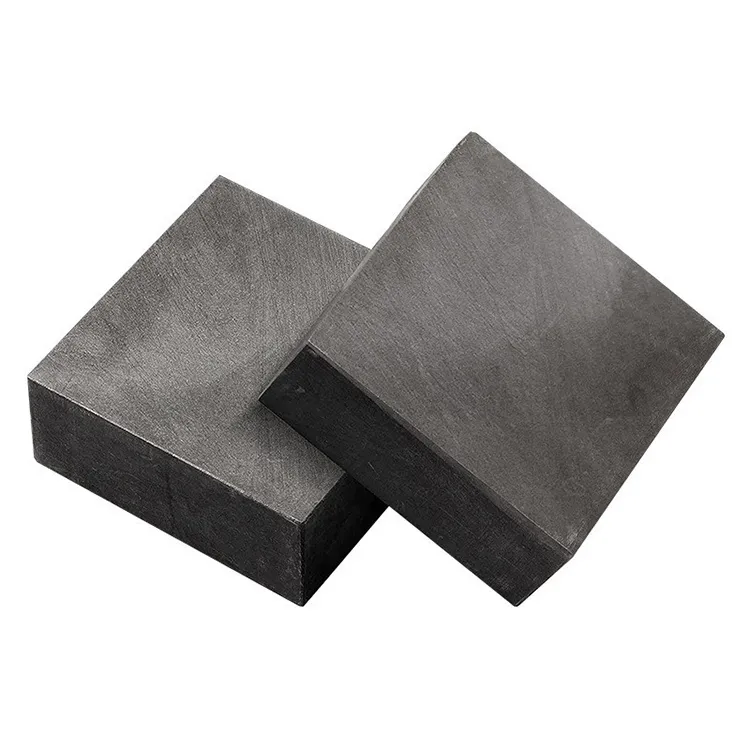What Makes Carbon Graphite a Critical Material in Modern Technology?
2024-12-03
Carbon graphite is a versatile and essential material that plays a significant role in a wide range of industries. From electronics to manufacturing, and even in renewable energy systems, carbon graphite's unique properties have made it indispensable. But what makes carbon graphite so special, and why is it used across such diverse applications? In this blog, we'll explore the properties of carbon graphite and its critical role in modern technology.
What is Carbon Graphite?
Carbon graphite is a form of carbon that is highly valued for its conductivity, strength, and thermal properties. It is made from carbon atoms arranged in a crystalline structure, which can be natural (from graphite mines) or synthetic (produced through high-temperature processes). The material is primarily composed of graphite, but its properties can be tailored by adjusting the manufacturing process. Carbon graphite is often used in applications where high heat resistance, durability, and low friction are required.
Why is Carbon Graphite So Important?
1. Electrical Conductivity
One of the key reasons carbon graphite is in demand is its excellent electrical conductivity. Graphite, in its pure form, is one of the best natural conductors of electricity. This makes carbon graphite an ideal material for electrical applications, such as in batteries, fuel cells, and electrical contacts. In the electronics industry, carbon graphite is often used in components like brushes for electric motors, as well as in conductive coatings for various devices. Its ability to conduct electricity efficiently makes it crucial in powering modern technology.
2. Thermal Resistance
Carbon graphite can withstand high temperatures without losing its structural integrity. This makes it particularly valuable in industries that involve heat, such as the aerospace, automotive, and energy sectors. In environments that experience extreme heat, like furnaces, reactors, or engines, carbon graphite is used to make parts like seals, gaskets, and heat exchangers. The material’s ability to resist thermal degradation ensures that machinery and systems function smoothly, even under high-temperature conditions.
3. Lubrication and Low Friction
Another critical feature of carbon graphite is its ability to reduce friction. Unlike metals, which can wear down over time due to friction, carbon graphite maintains its shape and function for extended periods. This makes it ideal for use as a lubricant in mechanical systems, such as in bearings, bushings, and seals. Carbon graphite's self-lubricating properties are particularly beneficial in applications where maintenance needs to be minimal, such as in high-speed machinery or environments where oil and grease cannot be used.
4. Strength and Durability
Despite its lightweight properties, carbon graphite is incredibly strong and durable. It has an impressive resistance to wear and tear, making it a preferred choice in high-demand industries. The material’s strength allows it to withstand mechanical stress, pressure, and shock, which is why it is commonly used in structural components for everything from vehicles to industrial equipment. Carbon graphite’s durability ensures that components have a longer lifespan, reducing the need for frequent replacements and repairs.
5. Chemical Resistance
Carbon graphite is chemically inert, which means it is highly resistant to corrosion and degradation from chemical exposure. This property makes it invaluable in harsh environments, such as chemical processing plants, oil refineries, and power generation facilities. Parts made from carbon graphite are used to prevent contamination and ensure the safe and efficient operation of equipment in industries that handle aggressive chemicals.
Common Applications of Carbon Graphite
1. Batteries and Fuel Cells
Carbon graphite plays a vital role in energy storage technologies, such as lithium-ion batteries and fuel cells. In batteries, graphite is often used as an anode material due to its ability to efficiently conduct electrons and store energy. Similarly, fuel cells, which convert chemical energy into electricity, rely on graphite for the construction of electrodes and other components. The growth of electric vehicles (EVs) and renewable energy systems has led to an increased demand for carbon graphite in energy storage and conversion technologies.
2. Electronics
Carbon graphite is used in various electronic components, including conductive inks, printed circuit boards (PCBs), and electrical contacts. Its excellent conductivity makes it an ideal material for use in devices that require high performance and reliability, such as smartphones, computers, and wearable technology. Carbon graphite is also used in rechargeable batteries, capacitors, and in the construction of microelectronics.
3. Aerospace and Automotive Industries
In both aerospace and automotive industries, carbon graphite is used for its strength and thermal resistance. In the aerospace sector, components like rocket nozzles, heat shields, and bearings are made from carbon graphite due to their ability to endure extreme temperatures. In the automotive industry, carbon graphite is used in brake pads, clutches, and gaskets because of its ability to handle friction and heat effectively. Its lightweight properties also help reduce the overall weight of vehicles, contributing to improved fuel efficiency.
4. Manufacturing and Industrial Equipment
In manufacturing, carbon graphite is used in machinery and industrial equipment where high temperatures, friction, or electrical conductivity is a concern. It is used for components such as seals, bearings, pumps, and valves. Its strength and durability ensure that these components last longer, even under the most demanding conditions. Carbon graphite is also used in furnace linings, molds, and electrodes for casting, forging, and metalworking applications.
5. Medical Devices
Another emerging application of carbon graphite is in the medical field. Its biocompatibility and strength make it an ideal material for implants, surgical instruments, and diagnostic equipment. It is also used in radiation therapy equipment due to its ability to absorb radiation and protect surrounding tissues.
How is Carbon Graphite Made?
The production of carbon graphite involves several key steps, depending on whether it is produced naturally or synthetically. The natural form of graphite is extracted from mines, then refined to remove impurities. Synthetic graphite, on the other hand, is made by heating carbon-rich materials (such as petroleum coke) at extremely high temperatures in a process known as graphitization. This process results in a crystalline structure that enhances the properties of the material.
The production process allows manufacturers to adjust the material’s characteristics, such as its electrical conductivity, thermal resistance, and strength, making it suitable for a wide variety of applications.
Conclusion
Carbon graphite is a highly versatile and indispensable material that plays a crucial role in modern technology. Its unique combination of electrical conductivity, thermal resistance, lubrication properties, strength, and chemical resistance makes it an ideal material for numerous industries, from energy storage to manufacturing and aerospace. As the demand for high-performance materials continues to grow in industries like renewable energy, electronics, and automotive, carbon graphite is poised to remain a key player in the development of advanced technologies for years to come.



